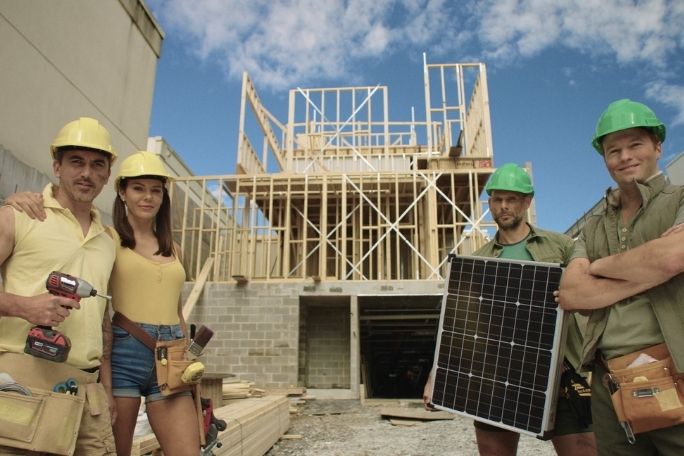Lesson summary
In this design lesson, students will research and apply sustainability and the concept of regeneration to retrofit a room. They will use their critical and creative thinking skills and Regenerative Design fact sheet to apply the best solution with minimal environmental impact.
Learning intentions:
Students will...
- understand the various aspects of sustainability and apply them meaningfully in a relevant context.
Success criteria:
Students can...
- apply sustainability and regeneration concepts to a context that is relevant to them
- understand the difference between sustainability and regeneration
- be able to make sound decisions regarding the use of materials, technologies and application of regeneration/sustainability concepts relevant to a context.
Lesson guides and printables
Lesson details
Curriculum apmping
Australian Curriculum content descriptions:
Years 9 & 10 Design and Technology :
- Critically analyse factors, including social, ethical and sustainability considerations, that impact on designed solutions for global preferred futures and the complex design and production processes involved (ACTDEK040)
- Investigate and make judgements on how the characteristics and properties of materials, systems, components, tools and equipment can be combined to create designed solutions (ACTDEK046).
Year 9 Geography:
- The perceptions people have of place, and how these influence their connections to different places (ACHGK065).
Year 10 Geography:
- Human-induced environmental changes that challenge sustainability (ACHGK070).
Syllabus outcomes: D&T5.3.1, D&T5.4.1.
General capabilities: Literacy, Critical and Creative Thinking, Ethical Understanding, Intercultural Understanding, Personal and Social Capability.
Cross-curriculum priority: Sustainability, Aboriginal and Torres Strait Islander Histories and Cultures, Asia and Australia’s engagement with Asia.
Relevant parts of Year 9 & 10 Design and Technology achievement standards:
Students consider factors that impact on design decisions and the technologies used to produce products, services and environments. They identify the changes necessary to designed solutions to realise preferred futures they have described. When producing designed solutions for identified needs or opportunities, students evaluate the features of technologies and their appropriateness for purpose for one or more of the technologies contexts.
Students create designed solutions based on a critical evaluation of needs or opportunities. They establish detailed criteria for success, including sustainability considerations, and use these to evaluate their ideas and designed solutions and processes. Students communicate and document projects, including marketing for a range of audiences.
Level of teacher scaffolding: Medium level of scaffolding due to information students need to retain regarding sustainability. You may need to model examples of drawing types, e.g. sketch or provide examples of what a mood board looks like.
Resources required
- Materials: Sketchbooks, A3 paper, grey lead pencils, erasers, rulers, coloured pencils, glue (fine liner pens, smartphones, and the photocopier is optional)
- Regenerative Design fact sheet (one per student)
- Student worksheets
- Video access to the film Regenerating Australia.
Skills
This lesson is designed to build students’ competencies in the following skills:
- Communication
- Creativity
- Critical thinking
- Problem solving
Additional info
Regenerating Australia is a Regen Studios film developed and produced in association with WWF-Australia. Cool.org and Regen Studios would like to acknowledge the generous contributions of Shark Island Foundation, Documentary Australia Foundation, and our philanthropic partners in the development of these teaching resources.


Welcome back!
Don't have an account yet?
Log in with:
By signing up to Cool.org you consent and agree to Cool's privacy policy to
store, manage and process your personal information. To read more, please see
our privacy policy here(Opens in new tab).
Create your free Cool.org account.
Many of our resources are free, with an option to upgrade to Cool+ for premium content.
Already have an account?
Sign up with:
By signing up to Cool.org you consent and agree to Cool's privacy policy to
store, manage and process your personal information. To read more, please see
our privacy policy here(Opens in new tab).